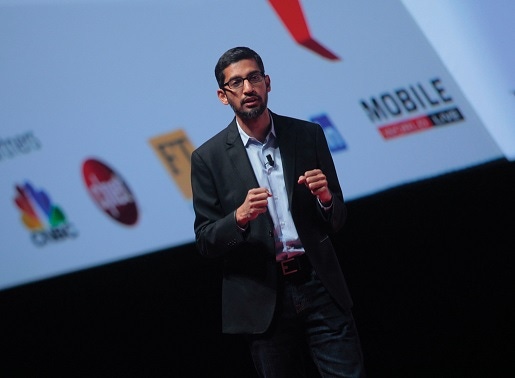Google’s SVP of Products, Sundar Pichai, confirmed in his speech at MWC that the OTT giant is in advanced testing of its floating cellular network, consisting of inflatable balloons and lightweight solar-powered planes. Projects “Loon” and “Titan”, respectively, are in the early phases of testing, but Pichai believes the two projects will provide a portable “mesh of floating cell towers”. He also confirmed the long-anticipated rumour that Google is looking to launch an MVNO in the US.
March 3, 2015

Google’s SVP of Products, Sundar Pichai, confirmed in his speech at MWC that the OTT giant is in advanced testing of its floating cellular network, consisting of inflatable balloons and lightweight solar-powered planes. Projects “Loon” and “Titan”, respectively, are in the early phases of testing, but Pichai believes the two projects will provide a portable “mesh of floating cell towers”. He also confirmed the long-anticipated rumour that Google is looking to launch an MVNO in the US.
“Project Loon started about four years ago as an experiment, and if you think about it it’s a crazy idea. The idea was to float balloons in the sky and make them act as floating cell towers,” he said. “We started the experiment about two years ago in New Zealand; at the time we could barely keep it up for five days and we were serving 3G speeds to antennas on the ground. We knew we had to keep it up for at least three months for it to work. Today, we’re able to announce that most of our balloons stay up as for up to six months, 200 days. Instead of 3G speeds, we’ve made progress to serve LTE speeds directly to mobile handsets on the ground.”
Pichai then revealed how Google is partnering with some of the world’s largest telcos to help make Loon a reality.
“We’ve started with large scale testing, doing this with Vodafone, Telefónica and Telstra in Australia,” he said. “We’re working with these partners to actually start real-world testing, at scale, of Project Loon.”
Project Titan, meanwhile, is a similar premise to Loon, but with more programmable, solar-powered, remote-controlled, lightweight planes which, when combined with Loon can provide a fully portable mesh network, Pichai claimed. While still in its relative infancy compared to Loon, he is expecting more advanced testing of Titan very soon.
“So you can imagine a constellation of balloons and planes together, which we can stitch together to create a mesh of floating cell towers,” he said. “These planes can supplement areas where we need extra capacity, think of a disaster relief zone, you need extra capacity and we can fly these planes over there.”
Meanwhile, answering a question relating to the firm’s long-rumoured MVNO play in the United States, Pichai confirmed that the fruition of a mobile phone network service from Google should be seen in the coming months, suggesting Google is looking at a holistic view to connectivity and particularly mobile.
“Our goal here is to drive a set of innovations,” he said. “I think we are at the stage when it’s important to think about hardware, software and connectivity together.”
Pichai also confirmed that Google is working with carrier partners in the US.
Google’s move towards an MVNO offering dovetails with its fixed fibre broadband access products in North America, and is further evidence of an intense phase of ongoing consolidation in the telecoms industry. Scott McKenzie, a director at consulting firm Coleago, reckons Verizon and AT&T may see this as an act of aggression from Google, which up until now has generally been a partner rather than a competitor.
“A further driving force could also be Google’s recently rolled out Fiber Internet and TV service and the subsequent potential for a quad play offering,” he said. “We’ve seen mobile industry consolidation increasingly lead to triple and quad play services, so why should Google not be seeking to attempt a similar strategy now it has dipped its toe in the water of Internet and TV service provision?”
“No matter what the motivation or stated intentions, Google’s strategy offers both opportunity and threat to operators, according to where they sit in the pecking order. Despite Pichai’s statement that they would not be taking on the leading operators head-on, Verizon and AT&T will still likely perceive its moves as an aggressive attempt to steal market share. Smaller carriers such as Sprint or T-Mobile meanwhile could gain from a successful tie up with Google due to the increased traffic and wholesale revenues, with little upfront marketing spend. They will need to balance that against the risk that they then allow Google to play the carriers off against each other potentially causing a damaging price war in the wholesale and retail markets.”
About the Author(s)
You May Also Like








.png?width=300&auto=webp&quality=80&disable=upscale)


_1.jpg?width=300&auto=webp&quality=80&disable=upscale)


.png?width=800&auto=webp&quality=80&disable=upscale)